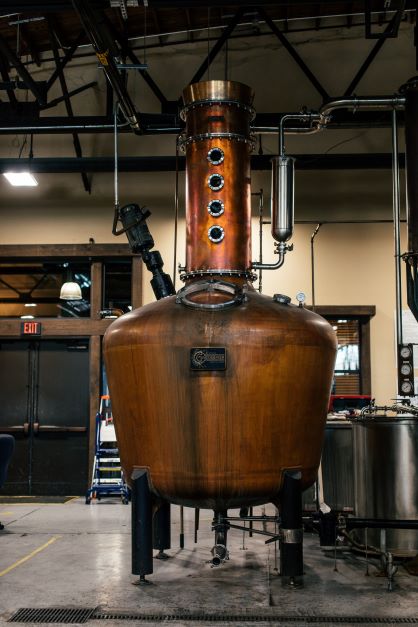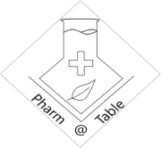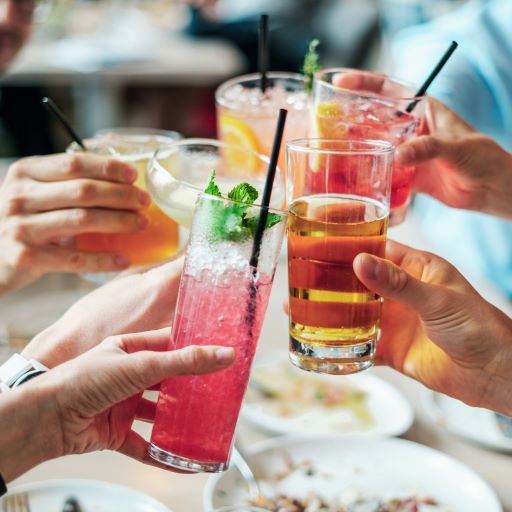“Oh wow, that last drink put me over the edge. I don’t want to start my weekend with a hangover. There’s got to be a way to sober up before bed…”
– A Scene from One of Those Nights
What’s the Story?
Quick History of Alcohol
For thousands of years, alcohol has been the go-to social lubricant for humanity. Some of the oldest written texts in the world are beer recipes written on clay tablets.
But for as long as there has been alcohol, there have been people who take it too far. For some, it is on purpose. For others, it can sneak up by accident. Whether there is something to forget or something to celebrate, many people have experienced drinking more than they can handle.


Alcohol Intoxication
Ever since alcohol was discovered, people have tried to undo its effects too. The desire to go to bed intoxicated and avoid a morning hangover is more dream than reality. More importantly, serious cases of intoxication result in people causing permanent harm to their bodies. Sometimes this can even result in death.
Additionally, concern is growing because the rate of alcohol-related injury and death has been on the rise in the past few decades. In the United States, about one out of every three people will overuse alcohol at some point in their lives.
A Smart way to Sober Up
Recently, there have been scientific advances in our understanding of how alcohol is removed from our bodies. This information can be used to help someone sober up faster.
But it’s impossible to sober up without getting drunk. That’s why in this article, first we will talk about different types of chemicals with the name alcohol. Then we will go over what’s actually going on inside the body when we get drunk. And finally, we’ll talk about ways to sober up and break down a new study.
If your New Year’s resolution is to have better health including fewer hangovers, keep on reading. This article is for you.
How to Get Drunk
The Science of Alcohol
The act of getting drunk seems pretty simple doesn’t it? Just drink enough alcohol in a short amount of time and wham-o! You’re living your best (or worst) drunk life. But of course, our bodies are amazing machines. There is so much more than we can see going on behind the scenes.
What is Alcohol?
Alcohol is a general name for a large group of chemical cousins. There are many different kinds of alcohol. Some you probably have already heard of.
- Isopropyl alcohol is also known as rubbing alcohol. It is used to clean and disinfect.
- Sorbitol is a sugar alcohol. This sweet molecule is used in place of traditional sugar in sugar free gum and other treats.
But the star of today’s show is ethyl alcohol, better known as ethanol. This is the alcohol in beer, wine, vodka, and every other drink that causes intoxication.
Ethanol: Ethyl Alcohol


Ethanol – ethyl alcohol – is a small molecule that is easily absorbed in our gut and crosses into the brain. This is where the magic happens. It interacts with other chemicals in the brain and gives us a feeling of relaxation or letting go. This can mean smoother conversation, less anxiety, and a feeling of euphoria.
Of course, it comes with some downsides as well. Less function and balance are why drunk people have trouble walking, slur their words, and end up in vehicle accidents. I shouldn’t really have to say it, but come on, don’t drink and drive.
How Long Are You Drunk?
Like most everything about our bodies, it depends on the person. Some factors that influence how long someone stays drunk include:
- How much they drink
- How fast they drink
- How often they drink
- Gender (women get more drunk and faster than men)
- Body mass (more massive means slower intoxication)
- Drinking on an empty vs full stomach
- What medications you are taking
It Starts With One Drink
One drink is usually counted as one glass of wine, beer, or one shot (44 mL) of a spirit (vodka, whisky, etc.). This is because spirits are typically stronger than beer and wine. For example, typical vodka is 80 proof – 40% alcohol by volume. This is much higher than beer or wine. These average around 5% and 12% each.
But how long we stay drunk really depends on how drunk someone gets. This is because getting undrunk requires getting rid of the alcohol in our system. What’s more, most of the process gets started by only one enzyme.
Breaking Down Alcohol
Getting rid of the alcohol in our bodies is a complicated process and the end result is that we pee it out. However a lot of the work is done by the weekend’s hardest working enzyme, alcohol dehydrogenase.
Alcohol dehydrogenase
The enzyme alcohol dehydrogenase is the first one responsible for the breakdown of alcohol in our bodies. It is made by the liver and goes to work with your first sip. The problem is that we only have a limited supply. In the pharmacy biz we call this “enzyme saturation”. That means while the enzyme is being used, we have to wait until the reaction is done. Then the enzyme will free up to do more work.
Imagine being at a grocery store. No matter how many people are in line, if there is one cashier, only one person can be helped at a time. Alcohol dehydrogenase works in a similar way. That’s why the drunker you are, the longer it takes to sober up.
Poisonous Alcohol
Alcohol poisoning is caused by drinking too much alcohol in a short amount of time. This pushes someone past the point of being drunk. For some people, getting extra alcohol out of their system can be a matter of life or death. Every year people end up in the emergency room due to alcohol poisoning and it is the 3rd highest cause of preventable death.
Tell-tale signs of alcohol poisoning include:
- Confusion or unconsciousness (blacking out)
- Low body temperature
- Blue or pale skin
- Slow breathing or long breaks between breaths
- Seizures
Life Saving Tip:
Medications and Alcohol
Some liquid medications are made by mixing a drug in alcohol. These are called tinctures and elixirs. But doing this requires advanced knowledge of how a particular drug will interact with the ethanol solution.
So let’s keep things simple shall we? In general, alcohol and medications do not mix well. Some medications lose effectiveness with alcohol, some make alcohol’s effects stronger, and others can make you feel incredibly sick.
For an informational chart about specific medications and reactions, check out the “Talk Nerdy to Me” section.
How to Sober Up
A New Way to Get Sober from Alcohol
Even with all our modern medicine, when it comes to getting sober from alcohol, not much has changed. We need to wait for our bodies’ machinery to clear out alcohol in what is often a slow process. However, in a recent study, it was revealed that a special type of breathing, called isocapnic hyperpnea, could increase how quickly the body can get rid of alcohol and help someone sober up fast.


Breathing Technique: Isocapnic Hyperpnea (IH)
In the study, people used a machine called a ClearMate. A device nearly identical to this is FDA approved to help people recover from poisoning with a deadly gas called carbon monoxide. [insert pic?]
Using the device, you breathe in a little more carbon dioxide (CO2) and a little less oxygen. This helps clear the blood of the unwanted alcohol at a faster speed. This type of breathing requires deeper breaths at a faster rate than normal. The people in the study did IH breathing for a total of 3 hours.
Sober Up Quickly
The people in the study cleared alcohol from their system 3x faster than normal! The greatest part about this technique – no drugs required. Still, using the technique does not promise instant sobriety. Although one day, it may be the difference between having a morning hangover or a productive day. More importantly, it might be the difference between a hangover and a hospital visit.
Home Hangover Help
The million dollar question is: can this help someone sober up? The truth is…maybe. The study was done on a very small number of subjects, only 5 men. So while it seems promising, there is a long way to go to prove that this technique can work for a wide range of people and alcohol levels.
Maybe in the near future, a home version of this device will help folks all over the world lead more productive lives after a night out with friends. In the present day however, the best way to deal with a hangover is to avoid getting one in the first place.
Final Thoughts
I was surprised by how much we still don’t know. For example, it seems crazy to me that we’ve been making alcohol for thousands of years but still don’t really understand what a hangover is. Even more amazing, we don’t know how to prevent them or treat them perfectly. In another article, I will dive deeper into what we do know about hangovers.
The future looks promising. Since it is better understood now more than ever how to enjoy alcohol safely. In addition, the discovery of new tricks to get alcohol out of our bodies faster is a promising way to save lives and headaches.
At the end of the day, the best way to avoid intoxication is simply not to drink. However alcohol is easily available and part of many cultures globally. So, knowledge about responsible use is our best defense against its worst effects.
Talk Nerdy to Me (Details for Professionals and Curious Minds)
Alcohol Metabolism
At present, clinical procedures for elimination of circulating ethanol rely largely on the body’s natural physiology complimented with supportive measures. On average, alcohol is cleared at 3.3 mmol/hr (15mg/dL/hr).
Renal elimination is responsible for no more than 5% of total clearance in conjunction with cytochrome P450 (CYP). This method of elimination exhibits first-order (concentration dependent) kinetics in proportion to blood alcohol levels. The vast majority of alcohol elimination proceeds via hepatic metabolism utilizing several key enzymes, most notably alcohol dehydrogenase.
Alcohol Dehydrogenase
Greater than 90% of ethanol elimination is hepatic, largely catalyzed by alcohol dehydrogenase. It exhibits Michaelis-Menten zero-order (saturable) kinetics and is largely considered the rate limiting step in ethanol metabolism.
Ethanol – Drug Interactions
| Drug Category | Specific Medications | Reaction |
| Antibiotic | metronidazole (Flagyl), sulfamethoxazole – trimethoprim (Bactrim) | nausea, vomiting, sweating, flushing |
| Anticoagulant | warfarin (Coumadin) | blood clotting changes |
| Antidepressant | amitriptyline (Elavil) | sedation and drop in blood pressure |
| Anti-diabetic | – multiple – including: glipizide (Glucotrol) and metformin (Glucophage) | risk of low blood sugar (hypoglycemia) |
| metformin (Glucophage) | increased lactic acid | |
| Antihistamine | diphenhydramine (Benadryl) | drowsiness, loss of balance, sedation |
| Benzodiazepine | – all – including: lorazepam (Ativan) and alprazolam (Xanax) | drowsiness, loss of balance, sedation |
| Cardiac | nitroglycerin | nausea, vomiting, sweating, flushing |
| Muscle Relaxer | cyclobenzaprine (Flexeril) | drowsiness, loss of balance, sedation |
| Herbal | – multiple – including: chamomile, echinacea, valerian | increased drowsiness |
| NSAID Pain Reliever | – all – including: ibuprofen (Motrin, Advil), naproxen (Aleve) | risk of stomach and intestinal bleed |
| Opiate Pain Reliever | – all – including: fentanyl, morphine, oxycodone | drowsiness, loss of balance, sedation |
| Other Pain Reliever | aspirin | faster alcohol absorption |
| acetaminophen | risk for liver damage |
This list contains common medications impacted by the ingestion of alcohol. However the sample provided here does not contain all possible medications and interactions
Isocapnic Hyperpnea (IH) Study
The ClearMate gas exchange device facilitated IH during the treatment arm of the aforementioned study. The device maintains a higher overall concentration of inspired CO2. This allows for a gradient through which volatile compounds, i.e. ethanol, can diffuse across. This process allows a higher concentration of ethanol to be present in expired air than would be present under physiological conditions.
Methods
For the purposes of the reported study, five healthy male participants ingested 0.5g/kg body weight of ethanol. The subjects did not eat or consume alcohol for six and 12 hours prior to the study period respectively. Breathalyzer blood alcohol content (BAC) measurements began 20 minutes post ingestion and were repeated every 5 minutes during the study duration of 3 hours until a BAC of less than 0.03%. Each subject served as their own control by breathing room air on an alternate day of testing.
Results
IH increased the rate of ethanol clearance by at least 3 times that of normal in the study participants. At higher BACs the absolute quantity of ethanol cleared is greater due to first order elimination kinetics via the lungs. However, the half-life of ethanol remains unchanged. Two of the five study subjects experienced some rebound BAC after discontinuation of IH.
For additional information or ideas about future topics, don’t hesitate to contact us.
References:
- Damerow P. Sumerian beer: the origins of brewing technology in ancient Mesopotamia. Cuneiform Digital Library Journal. 2012 Jan 22;2(1).
- Alcohol Use and Your Health. Centers for Disease Control and Prevention. https://www.cdc.gov/alcohol/fact-sheets/alcohol-use.htm. Published April 14, 2022. Accessed January 17, 2023.
- Klostranec JM, Vucevic D, Crawley AP, et al. Accelerated ethanol elimination via the lungs. Sci Rep. 2020;10(1):19249. Published 2020 Nov 12.
- Tucker JA, Chandler SD, Witkiewitz K. Epidemiology of Recovery From Alcohol Use Disorder. Alcohol Res. 2020;40(3):02. Published 2020 Nov 12. doi:10.35946/arcr.v40.3.02
- Gallagher N, Edwards FJ. The Diagnosis and Management of Toxic Alcohol Poisoning in the Emergency Department: A Review Article. Adv J Emerg Med. 2019;3(3):e28. Published 2019 May 22.
- Msomi NZ, Erukainure OL, Islam MS. Suitability of sugar alcohols as antidiabetic supplements: A review. J Food Drug Anal. 2021;29(1):1-14. Published 2021 Mar 15.
- Mathew F, Goyal A. Ethanol. [Updated 2022 Dec 5]. In: StatPearls [Internet]. Treasure Island (FL): StatPearls Publishing; 2022 Jan-. Available from: https://www.ncbi.nlm.nih.gov/books/NBK556147/
- What happens when you drink alcohol. nidirect. Published October 12, 2017. https://www.nidirect.gov.uk/articles/what-happens-when-you-drink-alcohol. Accessed January 18, 2023.
- Alcohol poisoning. Mayo Clinic. https://www.mayoclinic.org/diseases-conditions/alcohol-poisoning/symptoms-causes/syc-20354386. Published January 19, 2018. Accessed January 19, 2023.
- National Institute on Alcohol Abuse and Alcoholism. Harmful Interactions. National Institute on Alcohol Abuse and Alcoholism (NIAAA). Published April 25, 2019. https://www.niaaa.nih.gov/publications/brochures-and-fact-sheets/harmful-interactions-mixing-alcohol-with-medicines
- FDA allows marketing of new device to help treat carbon monoxide poisoning. FDA. Published March 24, 2020. Accessed January 23, 2023. https://www.fda.gov/news-events/press-announcements/fda-allows-marketing-new-device-help-treat-carbon-monoxide-poisoning
- Paton A. Alcohol in the body. BMJ. 2005;330(7482):85-87. doi:10.1136/bmj.330.7482.85
- Weathermon R, Crabb DW. Alcohol and medication interactions. Alcohol Res Health. 1999;23(1):40-54.


Awesome article! Lately I’ve been seeing media over sober lifestyles and I think it’s great.
Fantastic! Thank you for the comment. I am happy to know I could facilitate your exploration.
So does this imply that hyperventilating into a paper bag, thereby slightly increasing your CO2 concentration in inspired air, could increase alcohol clearance?
Excellent question. You know I’m a big fan of when people Talk Nerdy to Me, thank you so much! I wondered the same thing.
My thoughts? A solid maybe. I think the principle is similar and would result in increased EtOH (ethanol) vapor in the breath. However, the lack of gas exchange in a paper bag may be a gift and a curse for 2 reasons. 1) EtOH vapor can not escape the bag (there is a 1-way exhale valve on the ClearMate device mentioned in the study) and it may end up reaching equilibrium with alveolar EtOH concentrations, capping how much we can truly eliminate. 2) As air in the bag continues to be recycled there is less oxygen available for exchange which may exacerbate some symptoms of intoxication.
I would love to get my hands on a study where they examine the effectiveness/safety of this. Even if the results aren’t as impressive, it would be nice to have a cheap at-home option for people to access.
You’ve given us lightweights hope for the future! 😂 no but seriously, nice write up. Look forward to more of the series!
Thank you so much for taking the time to comment! Whether a lightweight, heavyweight or anything in-between I’m glad you find the content helpful.
Great article! What are your thoughts on drinking coffee, tea, water or B vitamins and zinc as a remedy for hangover?
Great question. I’ll be addressing this in detail in the next article in the series, I’ll let you know when its done. Basically good nutrition and hydration are keys to preventing and treating hangovers. The trick is find a balance, not to over- (or under-)do it.